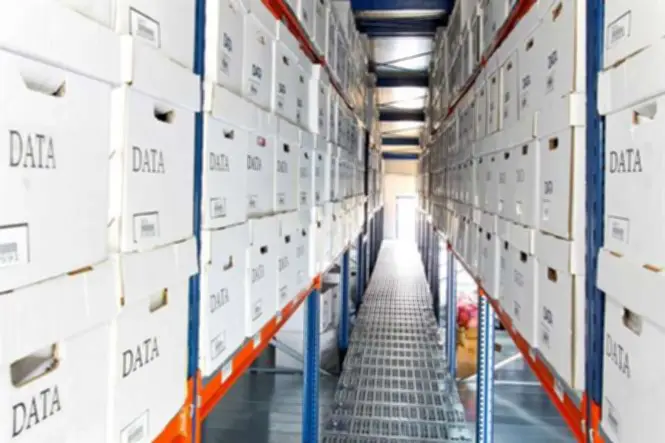Tectonic is a industrial version of Kubernetes, which is an open-source container orchestration platform. Tectonic aims to provide tools to handle and orchestrate containers throughout all main cloud providers, including Google Cloud Platform (GCP), AWS, and Azure. Container orchestration is the automation of the whole what is container orchestration lifecycle of containerized purposes. Think of it as an clever system that manages the deployment, scaling, networking, and well being of your containers, abstracting away the underlying infrastructure. A container orchestrator acts like the conductor of an orchestra, guaranteeing every container (instrument) plays its half correctly and in concord with the others to deliver a complete utility (the symphony).
Aws Elastic Kubernetes Service (eks)
At the center of Kubernetes lies its control plane, the command middle for scheduling and managing the application lifecycle. The management aircraft exposes the Kubernetes API, orchestrates deployments, and directs communication all through the system. It also displays container well being and manages the cluster, making certain that container images are available from a registry for deployment.
Additionally, if you ai networking‘re in search of a good open-source monitoring tool, read my reviews of the best open-source monitoring instruments. If you take a glance at our DevOps engineer information, containers play an important role and have lined some containers’ nice insights. Nomad comes with good integration of other Hashicorp tools like Consul, Vault, and terraform.
Use Autopilot mode for managed GKE clusters with pay-per-pod billing and simplified operations. Consider not solely your current needs but additionally potential future necessities. A software that scales properly and is regularly updated by its community or supplier will be a more sustainable alternative. Guarantee easy integration together with your present CI/CD pipelines, cloud monitoring techniques, and improvement practices.

Alongside with core Kubernetes options, it offers container management and orchestration out-of-the-box options. As per Datadog’s survey on Kubernetes adoption in organizations, practically 90 p.c of Kubernetes customers leverage cloud-managed providers. Kubernetes provides many functionalities that native docker instruments do not provide. Unlock new capabilities and drive enterprise agility with IBM’s cloud consulting providers. Discover tips on how to co-create solutions, speed up digital transformation, and optimize performance through hybrid cloud methods and professional partnerships.
For executives, understanding the synergy behind the container ecosystem supplies a strategic advantage. Armed with an knowledgeable perspective can allow you to anticipate and effectively meet the evolving calls for of contemporary software program improvement — and with optimum ROI. Very Important for digital enterprises experiencing fluctuating demand, orchestrators within the container ecosystem allow businesses to scale their functions with out compromising performance. The container ecosystem as a whole refines previous capacities for scaling and resource availability. Integrating with CI/CD pipelines and enhancing the agility of software growth, container orchestration fosters collaboration between development and operations teams.
- If you take a glance at our DevOps engineer guide, containers play an essential position and have lined some containers’ nice insights.
- As An Alternative, updates or fixes are utilized by deploying new containers or servers from a typical image with the required adjustments.
- This capability helps in guaranteeing availability during increased software uptime.
Container Orchestration Defined (plus Pro Tips And Tools)
But to improve container orchestration—along with your overall cloud security—you’ll want a unified, cloud native resolution. A cloud native application safety platform (CNAPP), for example, supplies enhanced, holistic security throughout your multi-cloud infrastructure. As you search for the best container orchestration platforms, it’s necessary to judge your present infrastructure after which discover the essential features you need for a healthy, safe cloud safety setting. Orchestration plays a pivotal position in harnessing containers’ full potential and considerably enhancing containerized apps’ efficiency and reliability. In cloud environments, container orchestration has turn into more crucial because it enables organizations to leverage cloud flexibility and scalability by managing containers across distributed infrastructures.
Every Little Thing is container‑native, so you’re still working with actual container orchestration, just simplified. Once you have multiple containers (or pods) for a similar service, the orchestrator takes care of load balancing. A problem with Docker is it runs on digital machines exterior the Linux platform (i.e., Home Windows and MacOSX).
Another critical operate of container orchestration is well being monitoring and self-healing. Orchestration instruments continuously monitor the health of running containers and mechanically replace people who fail or turn into unhealthy. Self-healing ensures that purposes stay resilient and obtainable, even in the face of failures. While container orchestrators like Kubernetes and OpenShift provide sturdy capabilities, enterprises often need a extra built-in method to handle containers within their broader IT workflows. This is the place a service orchestration and automation platform (SOAP) might help. Choosing the proper container orchestration device isn’t about hype; it’s about your team’s workflows, your infrastructure, and the way you intend to scale.

Availability
For example, a container orchestration answer can modify the CPU reminiscence and storage based on a person container, which prevents overprovisioning and improves total performance. Kubernetes is famously used open-source orchestration answer by the enterprises. It is well known for its ease to be used throughout platforms availability, and developer help. Now you have to handle resource provisioning for Kubernetes instead of containers. Container Orchestration is the technical process of automating the networking and management of software containers to deploy the functions at scale. This approach aims to streamline container infrastructure administration by automating its complete lifecycle, from provisioning and scheduling to deployment and deletion.
To let builders define inter-framework insurance policies, Mesos makes use of a pluggable application module . OpenShift was developed by Pink Hat to provide a hybrid, enterprise-grade platform that extends Kubernetes functionalities to companies that require managed orchestration. The framework is constructed on an enterprise-grade Linux Operating System that lets you automate the lifecycle of your containerized utility. This lets you simply handle all your workloads utilizing https://www.globalcloudteam.com/ a container to virtualize each host.
